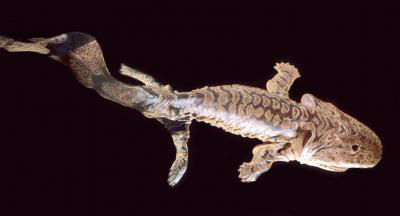Life on Earth has a rich and fascinating history that spans billions of years. From the emergence of the first living organisms to the complex diversity we observe today, the evolution of life has been a remarkable journey. In this article, we will explore ten incredible firsts in the evolution of life on Earth, shedding light on the pivotal moments that shaped our planet and its inhabitants. Check here the list of 10 Incredible Firsts in the Evolution of Life on Earth.
1. The First Appearance of Life

Billions of years ago, in the ancient oceans of Earth, the first living organisms emerged. These simple, single-celled organisms, known as prokaryotes, laid the foundation for all life forms that followed. Their ability to harness energy and reproduce marked the beginning of life’s extraordinary journey.
2. The First Photosynthetic Organisms

One of the most pivotal moments in the evolution of life was the emergence of photosynthetic organisms. These early life forms, such as cyanobacteria, were the first to harness the power of sunlight to convert carbon dioxide and water into oxygen and energy-rich organic compounds. This process, known as photosynthesis, not only transformed the Earth’s atmosphere but also paved the way for the development of complex life forms.
3. The First Multicellular Organisms

Approximately 600 million years ago, the first multicellular organisms appeared on Earth. These early creatures, composed of multiple cells working in harmony, marked a significant milestone in the evolution of complexity. From simple sponges to more advanced organisms, multicellularity opened up new possibilities for specialization and cooperation.
4. The First Land-Dwelling Organisms

Life on Earth was once confined to the oceans, but around 500 million years ago, the first organisms ventured onto land. These pioneering species, such as plants and arthropods, faced numerous challenges, including adapting to new environments and developing mechanisms to prevent dehydration. Their successful colonization of land opened up vast new habitats for future life forms.
5. The First Vertebrates

The evolution of vertebrates, animals with backbones, marked a significant milestone in the history of life. The first vertebrates, such as jawless fish, appeared around 500 million years ago. This development set the stage for the eventual emergence of diverse vertebrate groups, including amphibians, reptiles, birds, and mammals, each with their own unique characteristics and adaptations.
6. The First Flight

The ability to fly revolutionized the animal kingdom, and insects were the first to achieve this feat. Around 350 million years ago, insects evolved wings, enabling them to explore new ecological niches and evade predators. Flight was a game-changer, leading to the development of birds, bats, and other flying creatures that dominate our skies today.
7. The First Flowers

The appearance of flowers around 140 million years ago brought color and beauty to the world of plants. Flowers revolutionized plant reproduction by attracting pollinators and facilitating the transfer of pollen, leading to increased genetic diversity and the evolution of new species. The advent of flowering plants transformed terrestrial ecosystems, shaping the landscapes we see today.
8. The First Mammals

Mammals, the group to which humans belong, first appeared approximately 200 million years ago. These warm-blooded creatures brought a range of unique adaptations, including the ability to nurse their young with milk and possess hair or fur. The rise of mammals ultimately led to the dominance of our own species on Earth.
9. The First Human-Like Species

Among the many branches of the evolutionary tree, one lineage eventually gave rise to modern humans. Homo sapiens, our species, emerged around 300,000 years ago. With our advanced cognitive abilities, complex language, and tool-making skills, humans became the dominant species, shaping the world around us and leaving an indelible mark on the planet.
10. The First Technological Advancements

As humans evolved, we developed an unparalleled capacity for innovation and technological advancement. From the discovery of fire to the creation of sophisticated tools, our ability to manipulate our environment has propelled us forward. With each new invention, humans have pushed the boundaries of what is possible, forever changing the course of our planet’s history.
Conclusion
The evolution of life on Earth has been a story of incredible firsts, from the emergence of the first living organisms to the rise of intelligent beings capable of reshaping the world. Each milestone has brought about new possibilities and challenges, paving the way for the diverse and complex ecosystems we observe today. By understanding these remarkable firsts, we gain a deeper appreciation for the interconnectedness of all life on our planet and our place within this fascinating evolutionary tapestry.










